Sphere Sculpture Project – Core Competency
My Riverside Rapid Digital Portfolio
For Unit 6 – Rational Expressions and Equations, we learn a series of ideas such as: adding, subtracting, multiplying, and dividing rational expressions, solving for equations and more. In this blogpost, I will be going over 6.3 – Multiplying and Dividing Rational Expression. We were put to the task of creating a digital project that highlights our understanding of what we believe was the most important part of this unit. I choose to create a blog post describing all I know about this lesson.
Example:
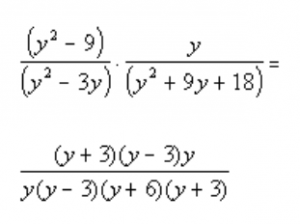

Example:


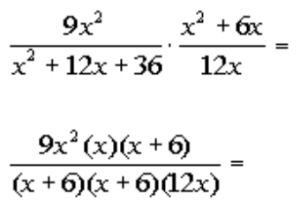
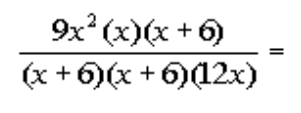
For our Chapter 4 Summary Project, we were put to the task of creating a Parabola using the numbers of our birthday. My Example – October 21, 2004, would become Then describe/explain everything you know about this as well as share a picture of what the graph looks like!
There are three different forms that you can write a quadratic function: Vertex form which is , Standard form which is
the last one is Factored form which is
.
When graphing your parabola, it is important to know that each form of the function offers different pieces of information. In vertex form, you are given the translation (slides), stretch or compression, vertex, and line of symmetry. In Standard, you are given the Y-intercept. In the Factored form, you are given the X-intercepts. Transferring from form to form required you to do a series of completing the square, factoring, or expanding. The plus of graphing is that you can easily define each part of the parabola, by just analyzing your function.
Vertex Form:
Standard Form:
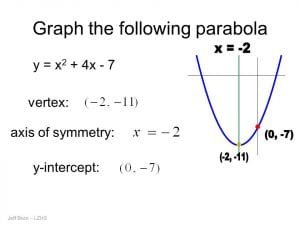
Factored form:
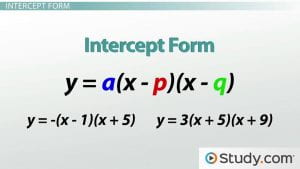

Description:
Vertex = (3,4)
X-intercepts = (1.845, 0) and (4.155, 0)
Y-intercepts = (0, -23)
Stretch = -3
Opens = Down (reflections)
Horizontal translation = 3 units to the right
Vertical Translation = 4 units up
For Unit 3 – Solving Quadratic Equations, we learn a series of ideas such as: factoring binomials and binomials, completing the square and more. I believe the most important lesson was 3.5 – Solving quadratic equations using the Quadratic Formula. We were put to the task of creating a digital project that highlights our understanding of what we believe was the most important part of this unit. I choose to make a digital poster as enjoy creating them and am familiar with using Glogster.
*Zoom in if necessary
For Unit 2 – Radical Operation and Equations, we learn a series of ideas such as adding and subtracting radicals expressions, multiplying and dividing radical expressions, solving radicals algebraically and more. I believe the most important lesson was 2.3 Multiplying and Dividing Radical Expressions, specifically dealing with irrational denominators. We were put to the task of creating a digital project that highlights our understanding of what we believe was the most important part of this unit. I chose to make a video.
Core-Competency:
For Unit 1 – Roots and Powers, we learn a series of ideas such as, classifying real numbers, writing mixed/entire radicals, evaluating radicals with positive or negative rational exponents, and more. I believe the most important lesson was 1.5 Evaluating powers with rational exponents. We were put to the task of creating a digital project that highlights our understanding of what we believe was the most important part of this unit. I choose to make a digital poster as enjoy creating them and am familiar with using Glogster.
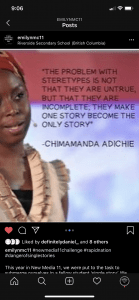 Over the first half of this course (New Media and Journalism 11), we looked at numerous sources of bias and one-way stories/views. As a class, we watched a TED talk presented by Chimamanda Ngozi Adichie called “The Danger of a Single Story.” Adichie, a young Nigerian author presented a powerful and captivating presentation of how we are exposed to single stories and the dangers that lay within. As young children, we get exposed to stereotypes with no knowledge of what they are. Children learn and respond based on how they are taught what is right and what is wrong. In the early stages of your childhood, you begin to read, write and talk. Throughout this time, you are exposed to many learning habits and culture. Adichie grew up reading writing about American culture. Her point was that up until she discovered African culture books, she couldn’t recognize that “girls with curls” could also exist in literature.
Over the first half of this course (New Media and Journalism 11), we looked at numerous sources of bias and one-way stories/views. As a class, we watched a TED talk presented by Chimamanda Ngozi Adichie called “The Danger of a Single Story.” Adichie, a young Nigerian author presented a powerful and captivating presentation of how we are exposed to single stories and the dangers that lay within. As young children, we get exposed to stereotypes with no knowledge of what they are. Children learn and respond based on how they are taught what is right and what is wrong. In the early stages of your childhood, you begin to read, write and talk. Throughout this time, you are exposed to many learning habits and culture. Adichie grew up reading writing about American culture. Her point was that up until she discovered African culture books, she couldn’t recognize that “girls with curls” could also exist in literature.
Through class discussions, we were able to brainstorm examples of some current stereotypes that are occurring today in our world. We were put to the task to form identity aspects for a personal and a self-chosen subject. I noticed that when we get told a one-sided story, we jump to conclusions on the situation. Single stories create stereotypes in our own mind, therefore, our mindset towards that situation is biased and too broad. By jumping to conclusions, assuming, and prejudicing, we form stereotypes and begin to normalize them. Those who can acknowledge the negative 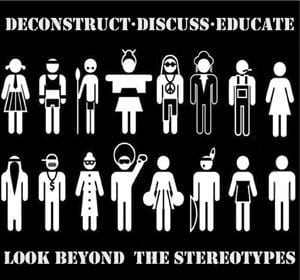 impact of single stories have a sense of maturity and kindness, compared to an arrogant and subjective personality.
impact of single stories have a sense of maturity and kindness, compared to an arrogant and subjective personality.
In a video created by Michael Wesch called “How to Stop Hating,” he chose to put himself in a setting that he wasn’t completely sure he would enjoy. Wesch decides to take part in a different “sub-culture.” He means this by participating in a culture or thing that he wouldn’t typically do. For instance, he is attempting to try country dancing with his sister (something he wouldn’t regularly do) and trying it without making any prejudgments. As acknowledged above, Adichie brings up the fact that stereotypes are not necessarily false, rather incomplete. Wesch is trying out this different  culture with an understanding that this lifestyle is different; He is willing to fill in that gap of unknown/incomplete. When Wesch walked into that country bar, he had an epiphany. Wesch says “stepping into that was like stepping into my past, something I’d been pushing away.” Doing an activity like this, Wesch was overwhelmed with thoughts and memories. He realized that activities like such help people heal and have fun. He was able to relate and connect to the music played on a deeper level. For Wesch, it took an Allen Jackson song for him to realize he wasn’t just watching a group of folk dancers, but he was watching a whole life unfold.
culture with an understanding that this lifestyle is different; He is willing to fill in that gap of unknown/incomplete. When Wesch walked into that country bar, he had an epiphany. Wesch says “stepping into that was like stepping into my past, something I’d been pushing away.” Doing an activity like this, Wesch was overwhelmed with thoughts and memories. He realized that activities like such help people heal and have fun. He was able to relate and connect to the music played on a deeper level. For Wesch, it took an Allen Jackson song for him to realize he wasn’t just watching a group of folk dancers, but he was watching a whole life unfold.
In inspiration from Wesch’s video, our class got to explore how to break single stories. We got to get to know a fellow student in our cohort class. Through this process, I got to know Hamza a bit better. I entered this challenge with an 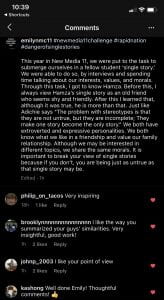 open mind and was ready to listen to his life story and morals. I found out that although we have some differences, we have a lot in common. We both value friendship and family and wouldn’t hesitate to put their needs before ours. We also have extroverted personalities once you get to know us. The most inspiring part of this process was the fact that we were able to ignore everything we thought we knew about each other and listen to the authentic story. To see more of the challenge, visit here.
open mind and was ready to listen to his life story and morals. I found out that although we have some differences, we have a lot in common. We both value friendship and family and wouldn’t hesitate to put their needs before ours. We also have extroverted personalities once you get to know us. The most inspiring part of this process was the fact that we were able to ignore everything we thought we knew about each other and listen to the authentic story. To see more of the challenge, visit here.
Due to all the conditions we have adapted to this year, I found this article quite captivating. In early spring, when the world was put in lockdown due to the coronavirus, most people were stuck inside dreaming of white sandy beaches, but not me. I was on the other side of the world sticking my feet in the clear ocean, but that was shortly put to an end. While I was supposed to be enjoying my 2-week tropical vacating to the Philippines, I ended up getting stuck in a house for 1 month before returning home to Canada. While I was article searching, I came across this one: “When Classroom Comes With Room Service and Poolside Cabanas” by Julia Weed. This article captured my attention by springing my memories. Julia Weed, the author of this blog post, thoroughly wrote an appealing article to appeal, criticize and entertain the reader. This article includes factual information as well as many references and examples of “schoolcation” development. The Great Wolf Lodge is one of the many companies to have taken on this challenge, offering socially distance learning on the resort property. Their plan was to turn conference rooms into a children’s clubhouse and open virtual classrooms. I this interesting as different states may have different school curriculum. This topic got my brain thinking and permitted me to critically think about the realisticness of this idea. Its captivating how desperate businesses are making changes and adaptations to keep the resorts up and running. It was truly shocking to see how desperate travellers can get.
ended up getting stuck in a house for 1 month before returning home to Canada. While I was article searching, I came across this one: “When Classroom Comes With Room Service and Poolside Cabanas” by Julia Weed. This article captured my attention by springing my memories. Julia Weed, the author of this blog post, thoroughly wrote an appealing article to appeal, criticize and entertain the reader. This article includes factual information as well as many references and examples of “schoolcation” development. The Great Wolf Lodge is one of the many companies to have taken on this challenge, offering socially distance learning on the resort property. Their plan was to turn conference rooms into a children’s clubhouse and open virtual classrooms. I this interesting as different states may have different school curriculum. This topic got my brain thinking and permitted me to critically think about the realisticness of this idea. Its captivating how desperate businesses are making changes and adaptations to keep the resorts up and running. It was truly shocking to see how desperate travellers can get.
When I was beginning my search for articles, I immediately was drawn to this specific article called “Have Some Passion for Your Heart” written by Hailey B (a guest blogger). This blog post was intended to inform and raise awareness of the writer’s experience in the real world. She was able to attain information showcased to her by Dr. Jingyi Liu about a campaign to bring awareness to Cardiovascular  diseases presented in a high school art class. The #heART hashtag was so relevant to her passion and drive about informing people about this campaign. She was so engaged in the presentation, on that same day, she became involved in #heART she begun to advocate and raise awareness of her knowledge on Cardiovascular Diseases. Hailey B wrote this blog in a passionate and compelling way. What drew my attention to these articles was the title itself. One of my passions is learning about the human body and how we function. I found it interesting how she decided to talk about our hearts in a way that was appealing to regular people like me. Hailey included facts to support the thoughts and thoroughly explain our job as citizens of the world to help spread awareness. The heart itself is a powerful organ, and it continues to amaze me. Hailey truly captured her passion for her heart.
diseases presented in a high school art class. The #heART hashtag was so relevant to her passion and drive about informing people about this campaign. She was so engaged in the presentation, on that same day, she became involved in #heART she begun to advocate and raise awareness of her knowledge on Cardiovascular Diseases. Hailey B wrote this blog in a passionate and compelling way. What drew my attention to these articles was the title itself. One of my passions is learning about the human body and how we function. I found it interesting how she decided to talk about our hearts in a way that was appealing to regular people like me. Hailey included facts to support the thoughts and thoroughly explain our job as citizens of the world to help spread awareness. The heart itself is a powerful organ, and it continues to amaze me. Hailey truly captured her passion for her heart.